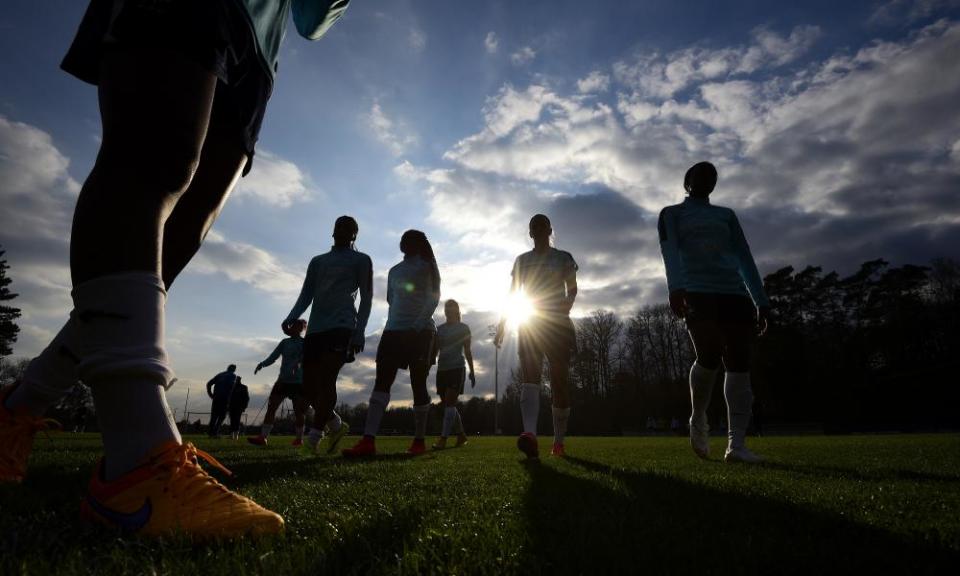'How did none of us think of this before?’: sports bra scheme breaks down entry barriers

Five years ago, Sarah Dwyer-Shick – a youth football coach from the United States – spent time visiting friends and colleagues scattered across Africa. Along with mosquito repellent and sunscreen, she carried with her a small bundle of sports bras as gifts for young players in rural Namibia.
When she arrived, Dwyer-Shick found that her gifts were coveted by older players, too – including those on the Namibian women’s national team. Many of them, she realised, had never owned a sports bra before.
“I was shocked,” Dwyer-Shick tells Guardian Australia. “To have the lack of something as a simple as a sports bra be another potential barrier to sports participation struck me as ridiculous, and something that could be addressed.
Related: Alyssa Healy uses Covid downtime to break down barriers for women's cricket | Megan Maurice
“Usually the reaction from women is, ‘oh my gosh, this is so obvious. How did none of us think of this before?’ But I played sports, I work in sports, and it’s taken this long for me to put two and two together.”
That was when the idea for The Sports Bra Project was first formed.
“It began as a grassroots project to meet a need and also to provide a way for individuals and teams to take action and directly support other athletes,” Dwyer-Shick says. “While the sports bra itself meets a physical equipment need, knowing that the bra was provided by someone who understands what it’s like to be an athlete provides a personal connection and the knowledge that she’s not alone. It creates a global network of athletes supporting athletes.
“Donated equipment can often end up being prioritised to programs geared towards boys or men, but a sports bra is something that can’t be appropriated in this way. We know it’ll go to girls and women.”
Five years on, The Sports Bra Project is now a non-profit organisation that coordinates the collection and distribution of thousands of sports bras donated by volunteer groups or purchased with financial contributions. To date, 4,000 new sports bras have reached the grateful hands of women and girls in a range of different sports, from recreational to national teams, in over 20 different countries.
“In its simplest form, it’s about making sport more accessible to a population that still faces barriers to playing. One way to help is to ensure they have all the equipment they need to participate fully in any sport that might be available to them,” Dwyer-Shick says.
“Bigger picture, it’s about normalising women’s involvement in sports at every level. We often talk about the reasons why women should have access to sport – health benefits, stay in school longer, leadership skills – but it’s time we move past that. Girls have the right to participate in sports simply because they want to. We don’t ask boys why they want to play or justify their involvement by the benefits they can get from playing sport, so it’s time we stopped asking girls the same.”
While the market for women-specific sports equipment like bras seems larger in non-Western nations, Dwyer-Shick says the need is just as strong at home in the US.
“At a global level, the success of our women’s national teams can make it seem like access for girls and women here is perfect. Unfortunately, this can make it easy to overlook the many places in the US where this access is still not a given, particularly in low-income areas where the pay-to-play model makes the costs of sports prohibitive.
“In many first-generation immigrant populations, it’s both the lack of financial resources and cultural norms brought from countries where girls don’t traditionally participate that play a role in many not having the same access [to sport] as their brothers. In some rural areas and on reservations, it can be both a lack of financial resources and logistics of travel that became barriers.”
For Dwyer-Shick, The Sports Bra Project does not just highlight the barriers of entry for women and girls in sport itself, it also exposes the lack of women at decision-making levels, where lived experience can affect the way sport is organised and resourced from the top down.
“I worked at a youth club where there were six directors and I was the only woman, even though more than a third of our athletes were female,” she says. “Getting coaching gear that fit and having requests like feminine products in medical kits, being taken seriously can be difficult when you’re the only voice in the room.
“This lack of representation at the decision-making and leadership level in sports can mean that topics which are part of everyday life for girls and women like sports bras and tampons are overlooked or seen as ‘special interest’.
“I want to normalise the sports bra as a piece of equipment, but I also want to continue the conversation about normalising girls’ and women’s involvement in every other area of sport, too.”

 Yahoo Finance
Yahoo Finance 